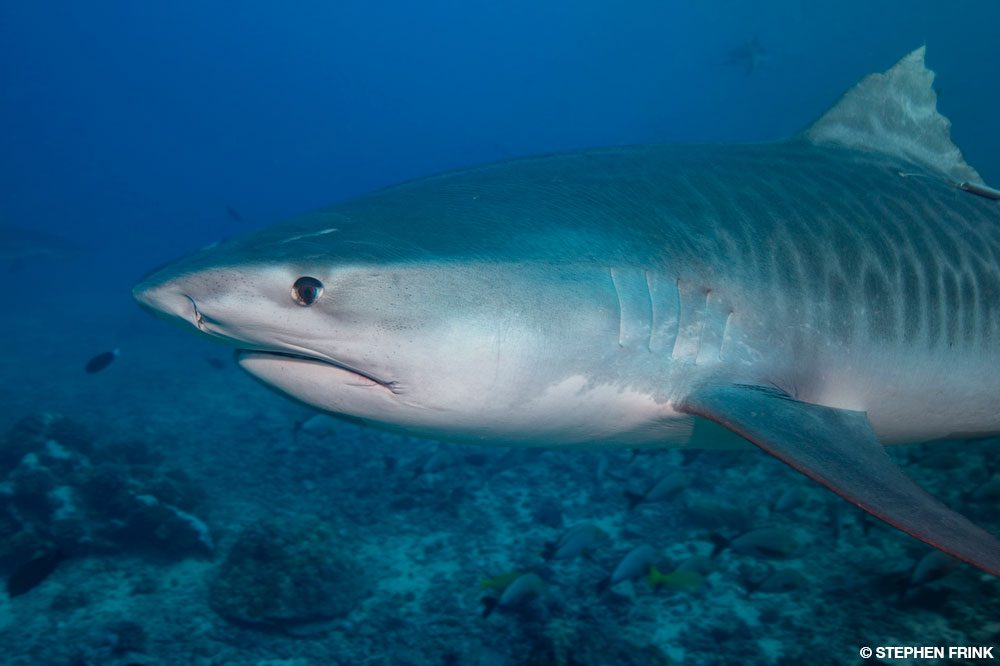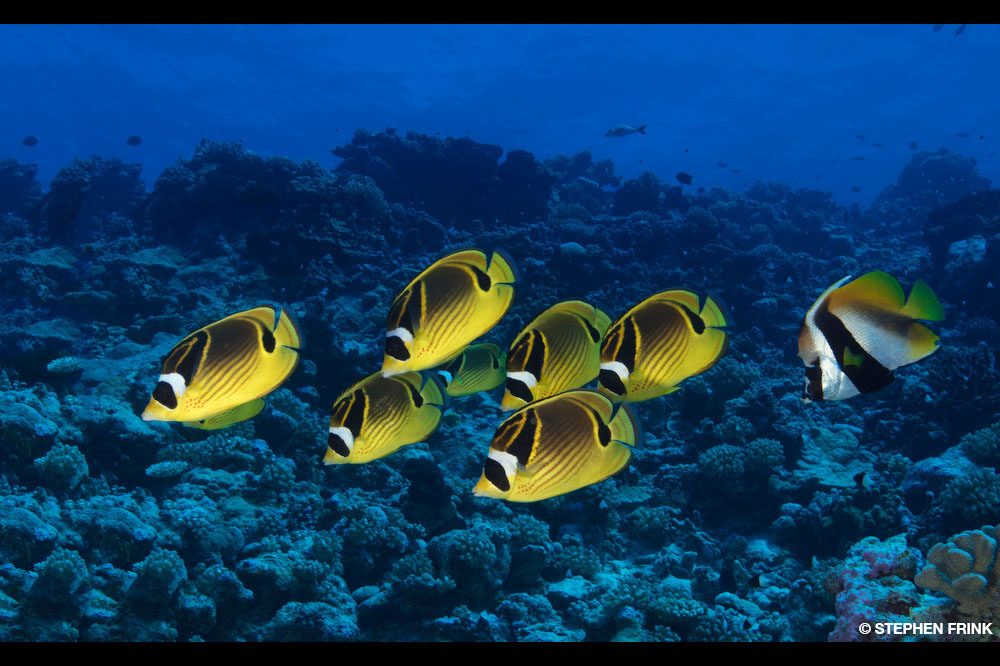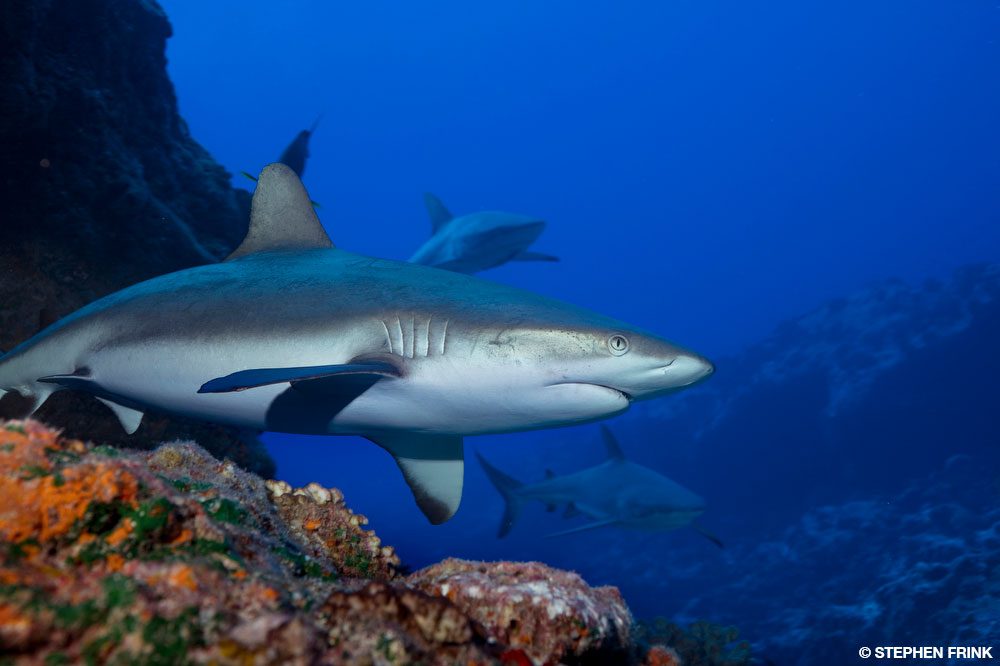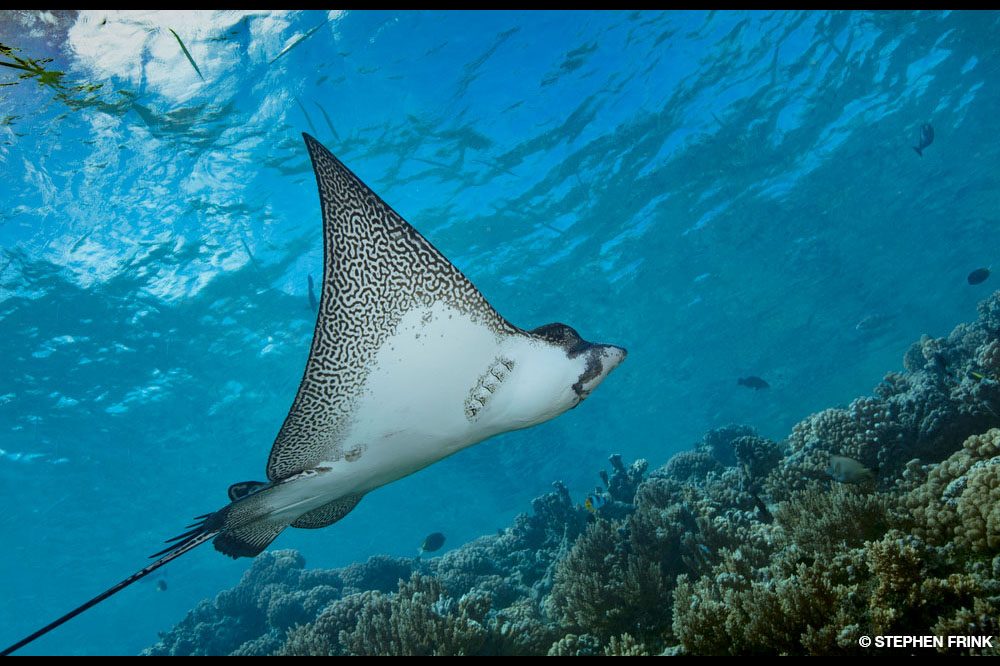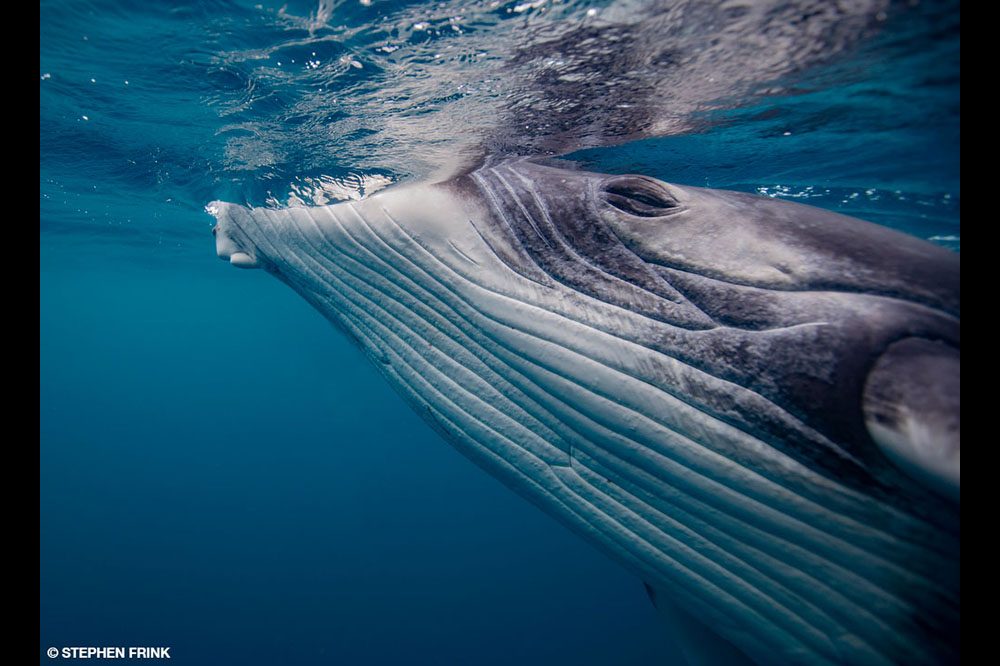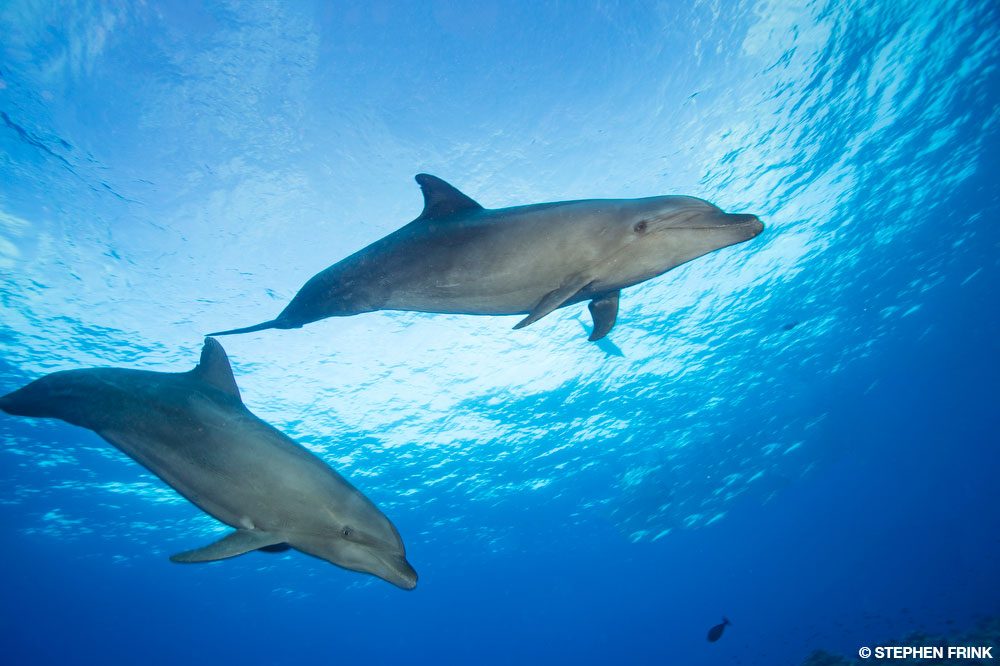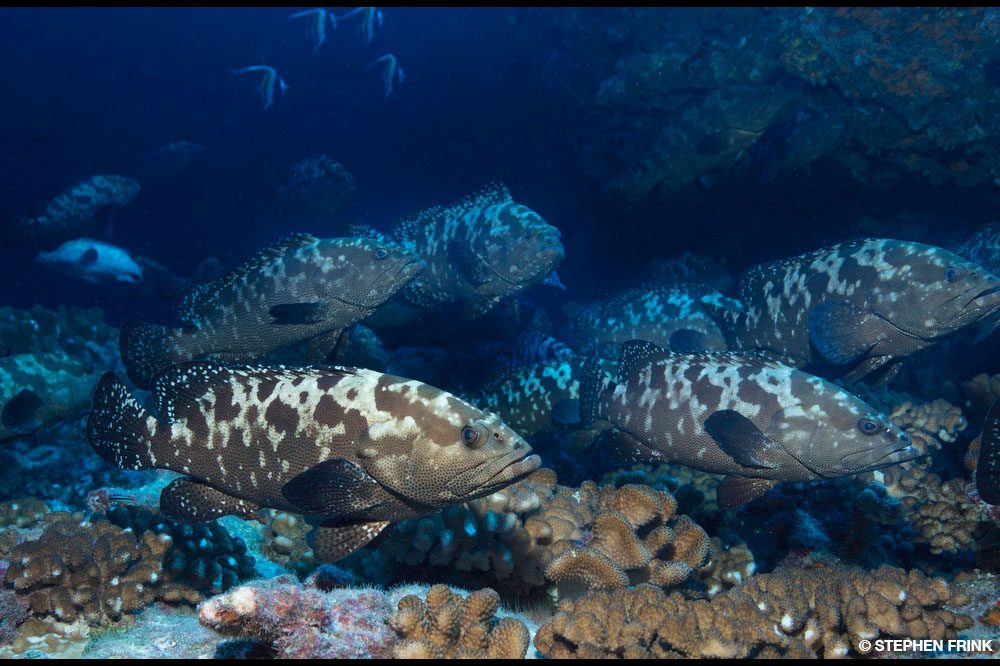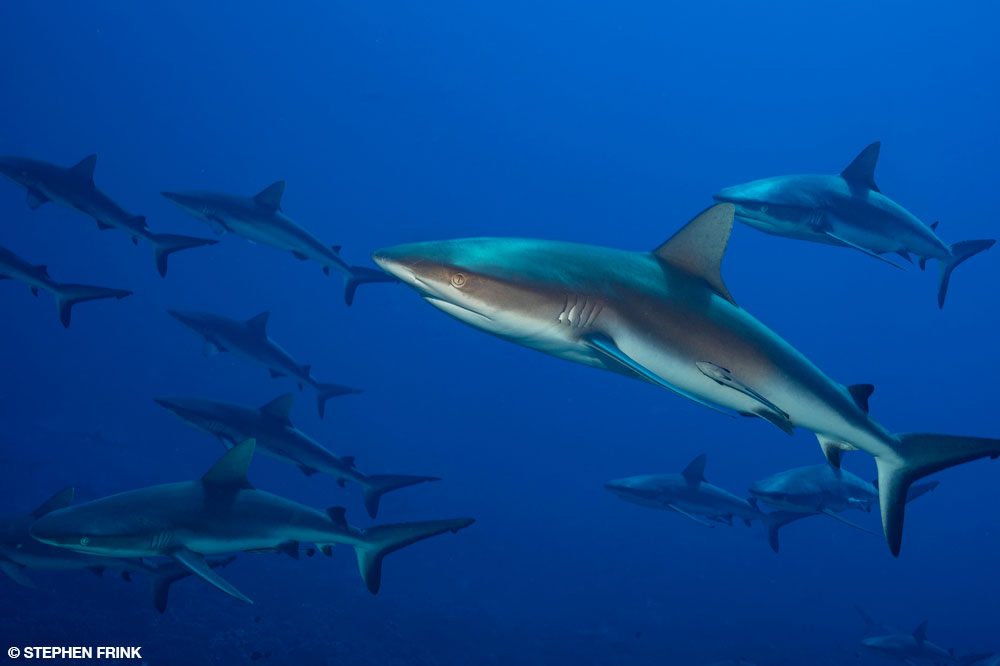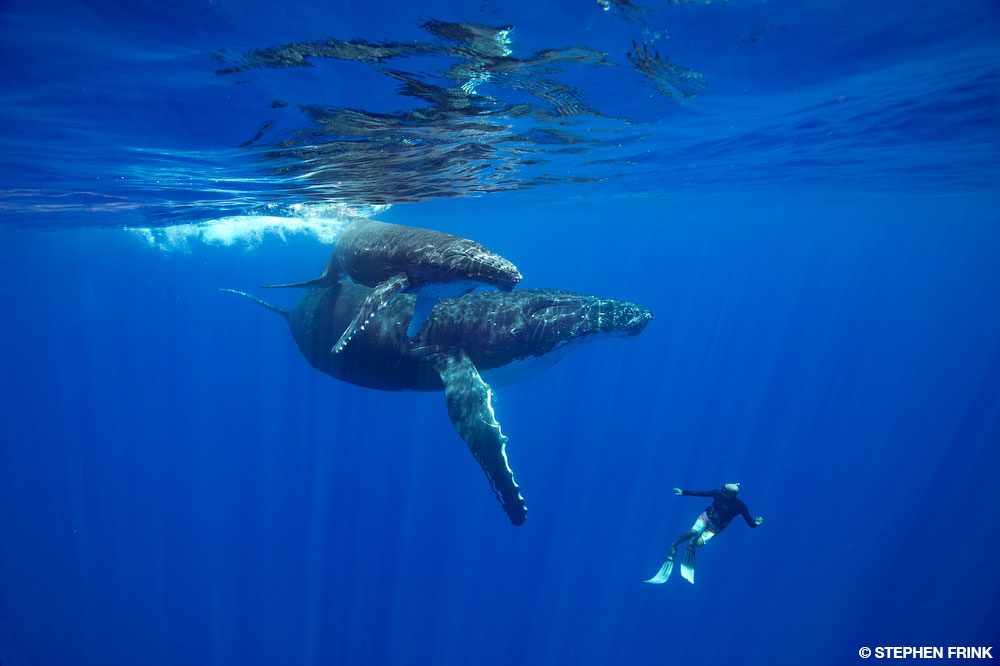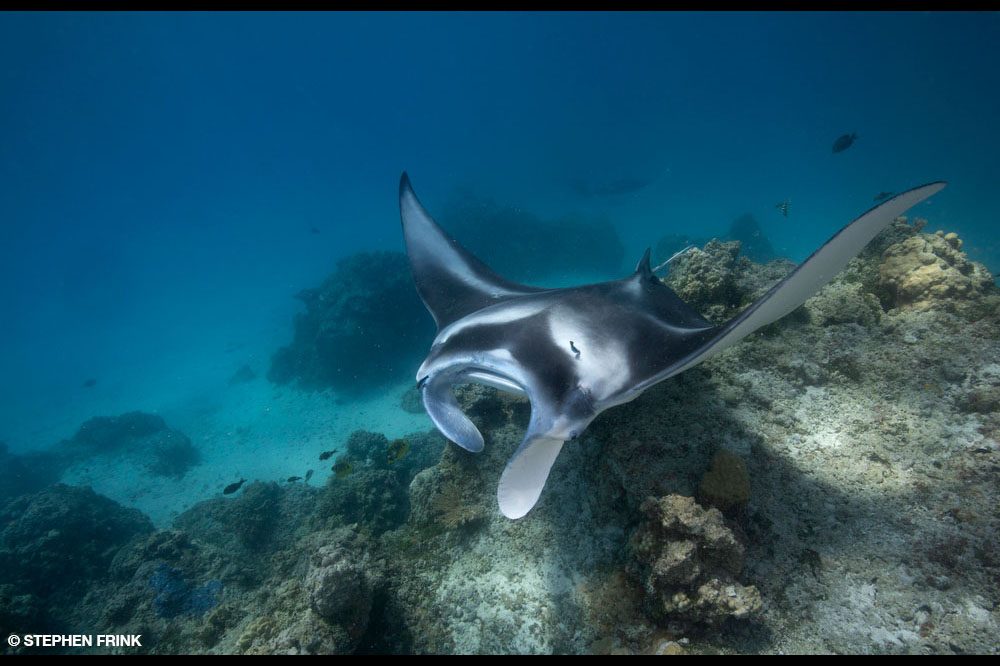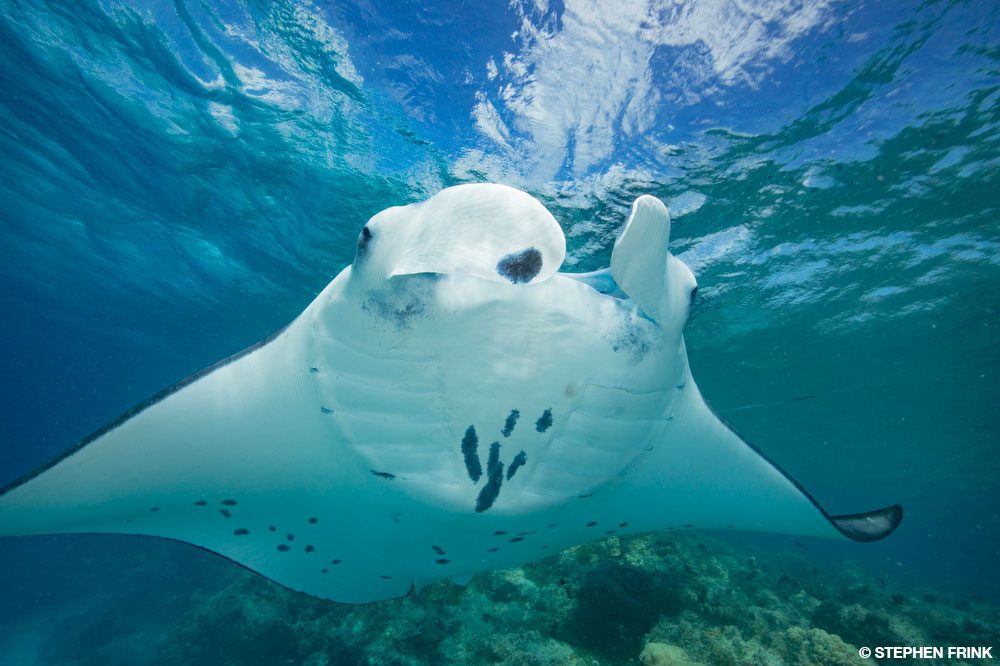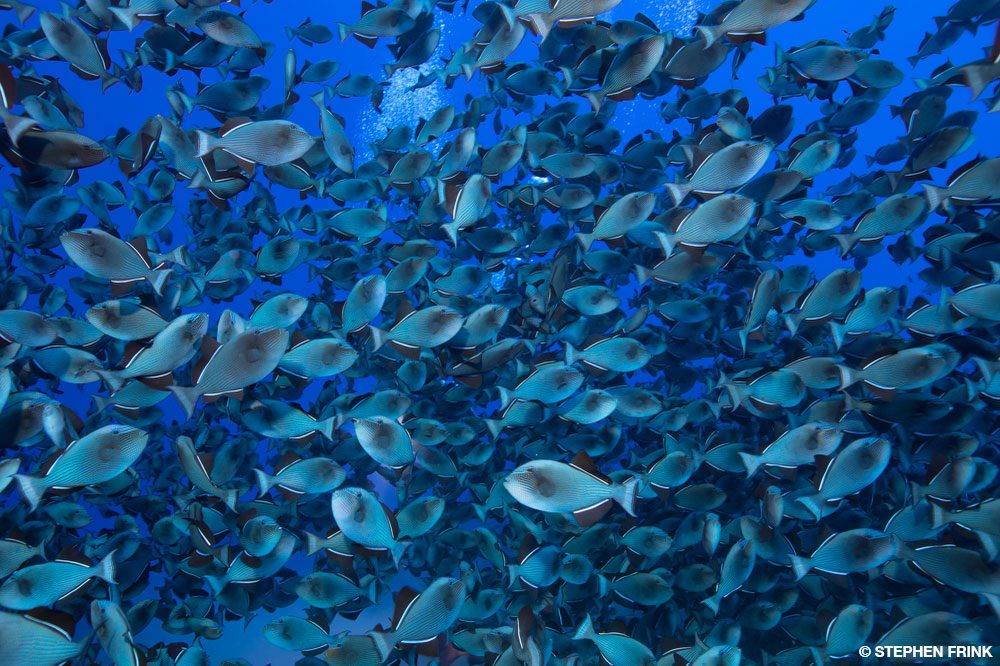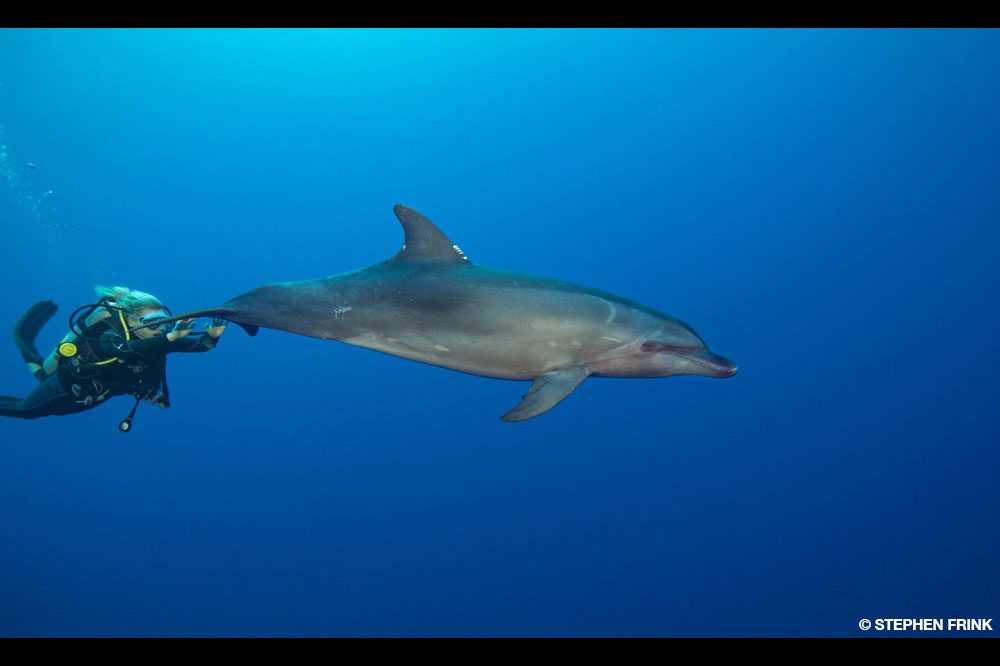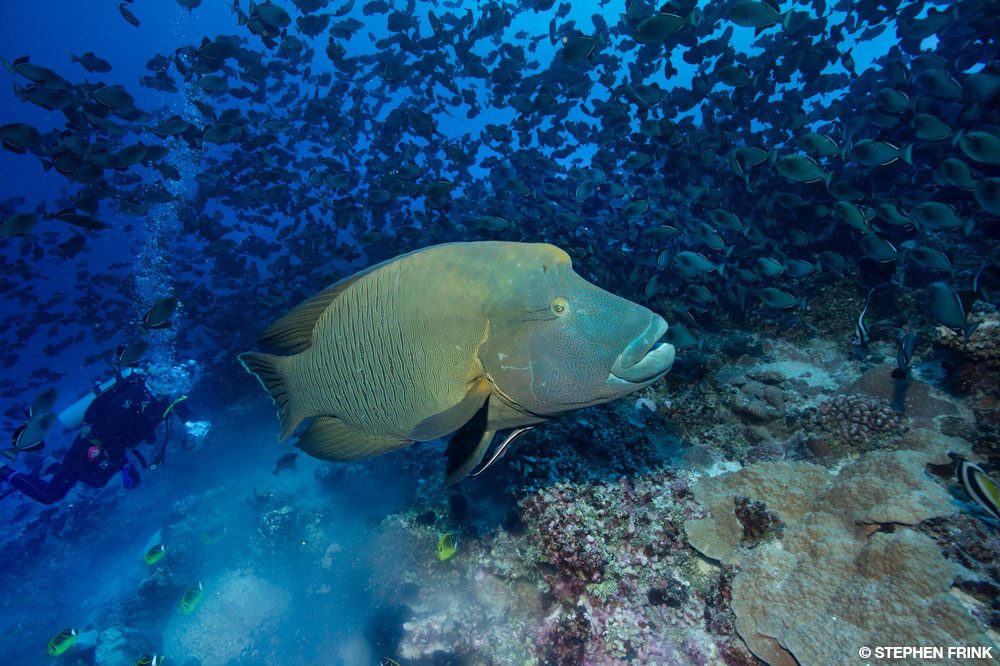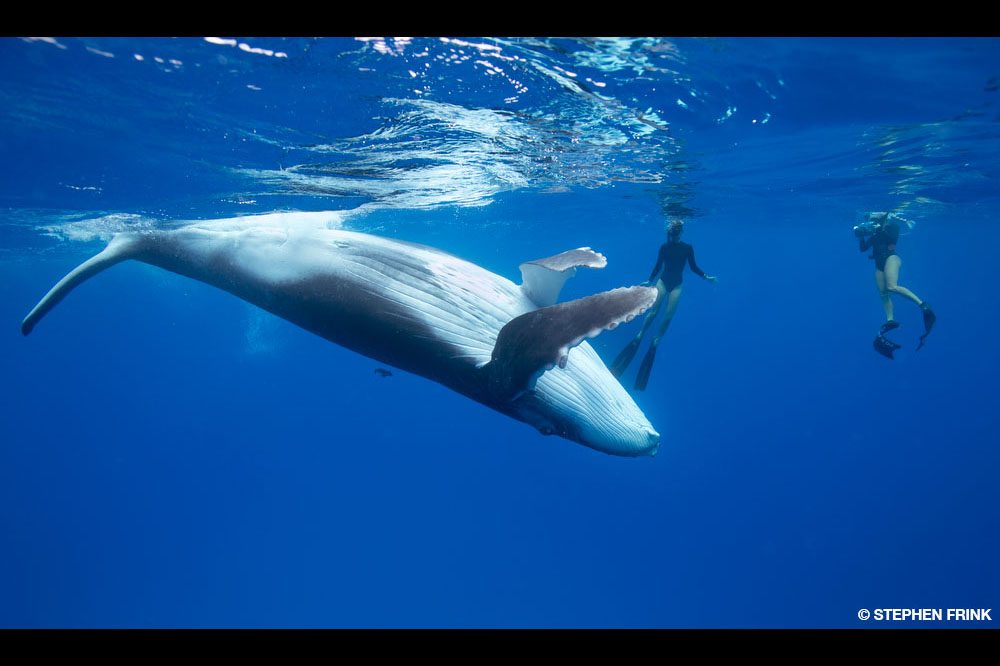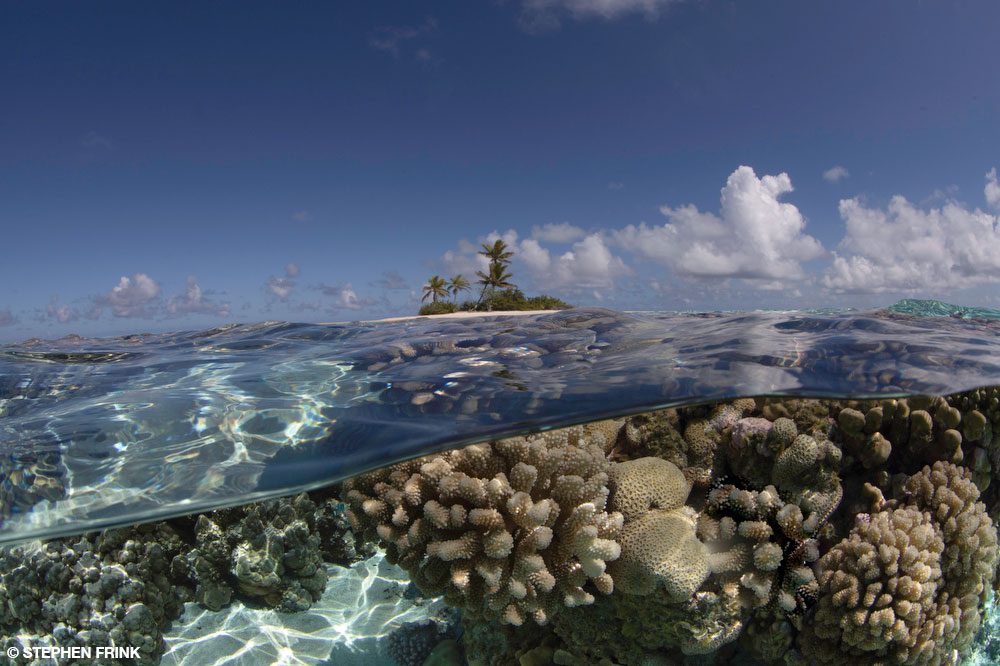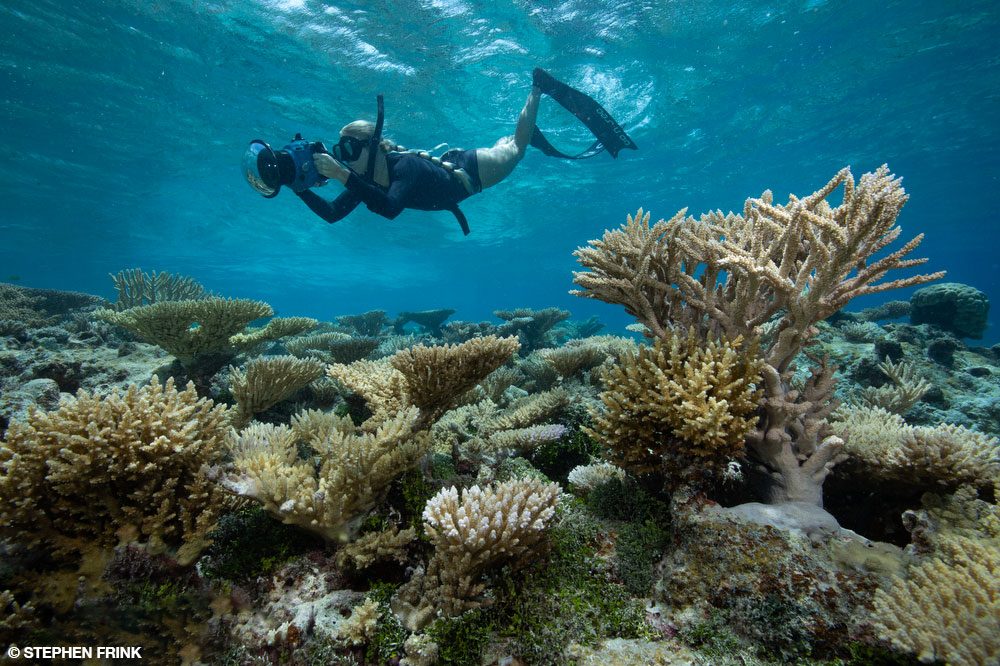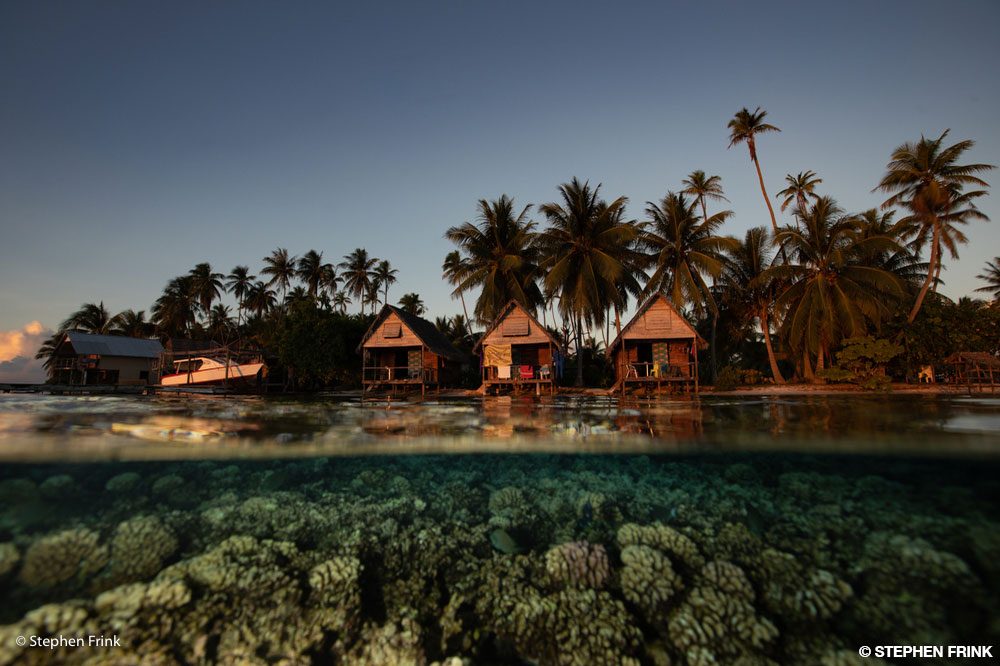Keajaiban surga di perairan dangkal
The chronology of my last sojourn to French Polynesia was much longer than the travel time from Seattle, Washington, to the capital Papeʻete on the island of Tahiti. I started contemplating an article about the South Pacific country’s shallow waters during a 2003 charter to the Tuamotu Archipelago, where I shot some over-under images with coral reef foregrounds and palm trees in the background. Since then I’ve often thought about the clear visibility and abundant reef and marine life in the first 20 feet (6 meters) of water there.
Saya berniat untuk melakukan upaya serius untuk pemotretan semacam itu, yang akan melibatkan penyelaman bebas, tetapi tujuan scuba terus memenuhi jadwal saya. Dinding hiu di Fakarava, lumba-lumba di Rangiroa, dan gerombolan ikan tropis berwarna-warni di hampir semua tempat merupakan pengalih perhatian yang ampuh, dan perairan dangkal tetap menjadi pertimbangan kedua.
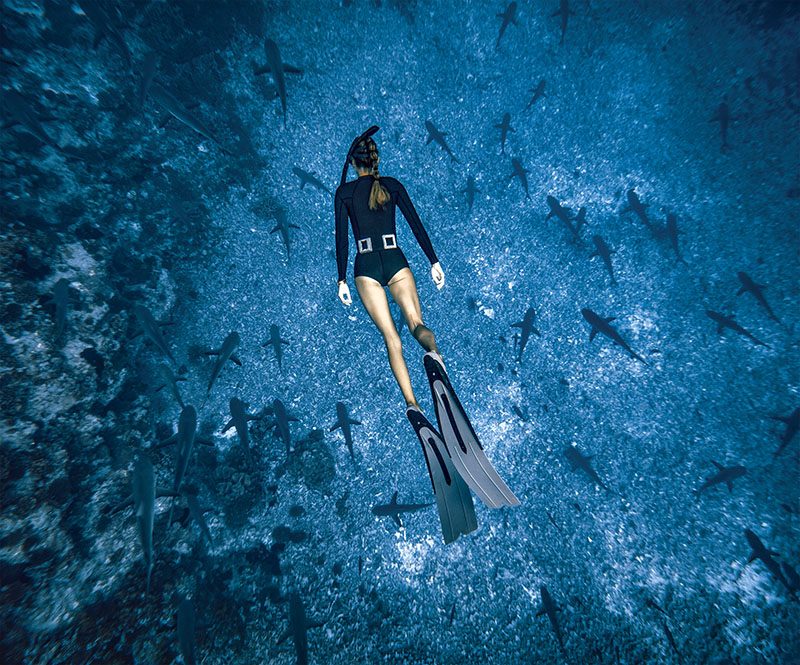
The 2003 trip was so good that I returned a year later to Bora Bora and Tahiti. Having heard about humpback whale sightings around Rurutu in the Austral Islands, we made a brief expedition further south during this visit. I was wearing so much neoprene for the cool water that I couldn’t get much deeper than 20 feet (6 meters) . I could see a whale resting on the lagoon floor below — I just needed to wait for her to come up for a breath, which she did — more than 300 (91 meters) feet away.
The one morning I had dedicated to whale sightings was far too brief because I didn’t yet realize the patience and time investment necessary for humpback encounters. While I didn’t get the shot, the memory of my clear, blue surroundings inspired more dreams of their potential.
An interlude during a 2005 dive trip took me to Moorea’s shallow reef. A secluded sandbar cresting only 4 feet (1,2 meters) below the surface had stingrays and blacktip reef sharks everywhere, and the island’s verdant hillsides provided a gorgeous backdrop for the above portion of my split shots.
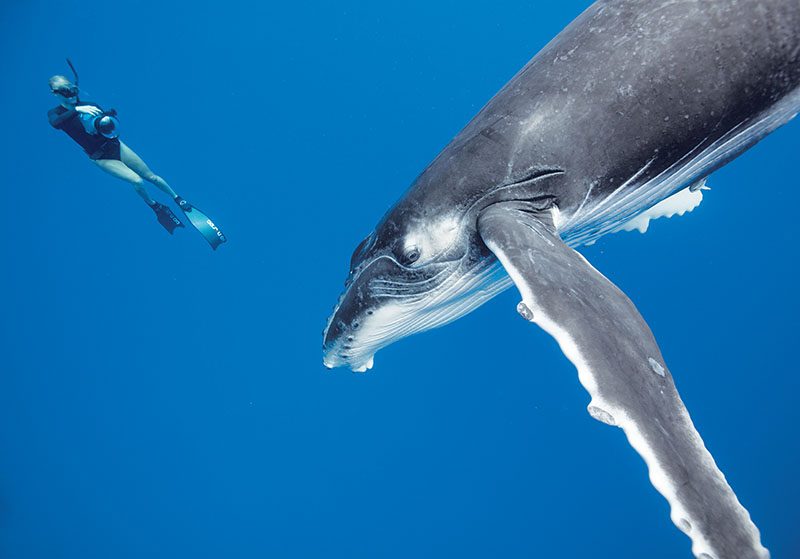
In 2008 I was on a magazine assignment aboard a cruise. The ship was akin to a modern clipper with swimming pools, gourmet food, and a dedicated dive service, but nobody would mistake it for a liveaboard. Most of the guests were not committed to scuba diving, so the sites we visited were relatively benign and predictable. The week’s most memorable in-water experience was snorkeling in the crystal waters, viewing the exquisite coral and abundant, approachable reef fish at Tahaʻa.
Menyelam di Rangiroa dan Fakarava adalah motivasi utama perjalanan saya pada tahun 2017 dan 2019 ke Tuamotus, tetapi air dangkal memberi isyarat selama beberapa interval permukaan yang ramah untuk berfoto. Hiu karang sirip hitam dan hiu lemon sirip sabit di Blue Lagoon, about an hourlong boat ride from Rangiroa’s main villages, are worth booking a dedicated excursion. Wading right in front of your guesthouse in Fakarava will reveal pristine hard corals, tropical fish, blacktips, and even gray reef sharks. A skilled freediver can find large congregations of reef sharks just a little farther offshore, close to Tumakohua Pass.
These chance encounters during breaks from scuba diving finally reached a critical mass. This collection of accidental-tourist events made me want to build a freedive-only trip during humpback whale season, from August through the end of October, so I worked out the details with Noel Morrison of Tahiti Tourisme during the Scuba Show in Long Beach, California. While I would have loved to revisit Tahaʻa, Rangiroa, and Fakarava, time would not permit all the inter-island domestic flights to make such an itinerary possible during one trip. Instead, we concentrated on two of the most iconic shallow-water marine life encounters: the humpback whales of Moorea and the manta rays of Tikehau.
Moorea
The whale swims in Moorea are becoming increasingly popular because of their proximity to the island and the consistent quality of the encounters. Flights to Papeʻete are about nine hours from Los Angeles or Seattle, making Moorea more accessible than other humpback destinations such as Tonga and Silver Bank in the Dominican Republic. The trip from Tahiti to Moorea is a short ferry ride offered many times daily.
On our first day of scheduled whale watching, we departed Tahiti on the ferry at 8 a.m., landed in Moorea about two hours later, and took a taxi to the dock to rendezvous with our whale boat. After a thorough briefing on humpback protocols, we shoved off. At 11:30 a.m. I was having the best encounter I’ve ever had with a baby humpback and vigilant mom. We were in the water for a world-class whale interaction just three and a half hours after we left Tahiti!
My previous encounters with humpbacks had been fleeting and distant, so I wasn’t prepared for the calf making a beeline for me. Our in-water guide didn’t know how I would react around this baby — a 20-foot-long (6 meters), 2-ton baby (2000 kilograms) — barreling toward me, so she was a little alarmed while I was ecstatic. I learned to get out of the way of a whale that was getting too close, a skill that I’d never had the occasion to learn before this trip.
We had multiple encounters — I couldn’t imagine that any number would be enough, but I was still amazed. The best one was with a mom and calf on the last day. The sun was shining, and the water was crystalline. The mom seemed mellow about her calf being close to us, so it was really good and getting better by the moment. I saw it all unfolding in my imagination as they edged closer. This was going to be the whale shot of my career — until one diver with the skill and breath control to submerge to about 20 feet (6 meters) gently touched the mother whale on her pectoral fin, and that was all it took. The whales immediately swam away, and we never saw them again that day.
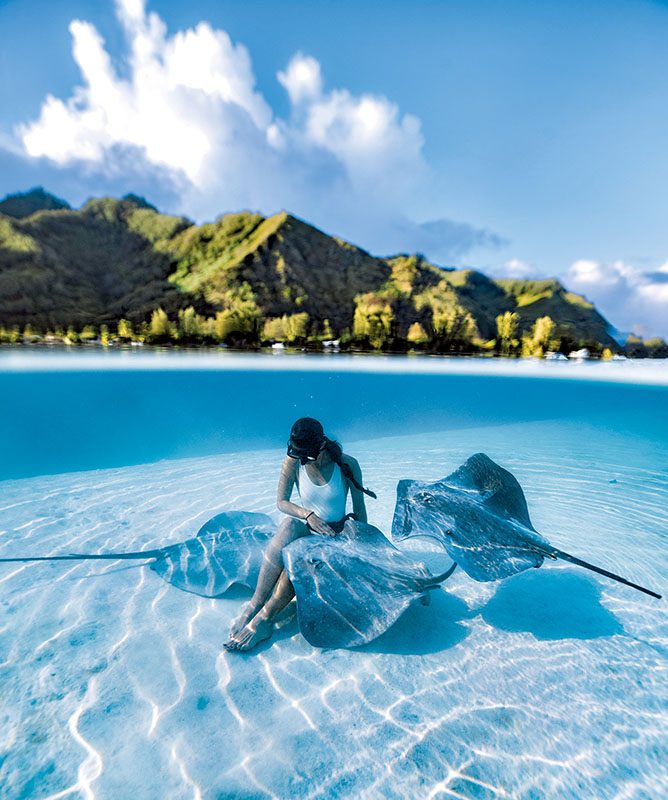

The rules are in place for the whales’ benefit and to ensure optimal respect so whales and freedivers alike can have successful encounters. Touching a whale is definitely not acceptable behavior.
Whale encounters aren’t by accident. The whale boat crews are a close-knit community, and they let each other know where whales are on any given day. We were lucky they were near us for that first encounter, which wasn’t necessarily the case on the other days. We spent a fair bit of time searching the horizon for whales, but we always found them. I booked two and a half days for the whales this time, having learned my lesson in Rurutu, and the excursion was productive every day. The clear water and abundance of friendly, approachable whales make Moorea an extraordinary opportunity.
The other marquee shallow-water encounter on Moorea is the shallow sandbar we came across in 2005. We were the only boat there that day in 2005, but it was a different story at noon on a beautiful day in 2022. Peering into the water revealed plenty of stingrays and blacktip reef sharks, but there were also four tour boats, 14 personal watercraft, and two stand-up paddleboards. I learned a lesson from my travel companions, Kelsey Williamson and Andrea Ference, about avoiding the crowd. They got up at first light to kayak to the sandbar and had it all to themselves in calm conditions and magical morning light. Kelsey came home with wonderful images from that morning, and I’ll know to do the same thing next time.
Tikehau
Tikehau was totally new to me; truthfully, I didn’t know where it was. There are so many islands that it’s difficult to remember the long list of names, but I trusted that the pilot for the short flight knew where we were going. It turned out to be in my favorite island group on the planet: the Tuamotus.
Seeing it on the map, I understood why I’d never been there. I’d only visited the Tuamotus by boat, and there is plenty of diving to satisfy a 10-day trip between Rangiroa and Fakarava. We’d usually fly into Rangiroa, cruise from west to east, and fly home from Fakarava. Tikehau, being northwest of Rangiroa, was out of the way on that itinerary. It turned out that being out of the way is what Tikehau does best.
Tikehau adalah atol kecil melingkar yang hanya seluas 16 mil (26 kilometer), dan tempat menyelam terbaik adalah di sepanjang pantai barat dekat Tuheiava Pass. The area is well-known for tiger sharks. Shark fishing and trading have been banned since 2012, so the populations are healthy. French Polynesia law currently prohibits feeding sharks in lagoons and passes and within a 0.6-mile (1-kilometer) radius of a pass. The sharks are there, but protecting them also means we aren’t guaranteed a close encounter.
Pengunjung ke Motu Mauu di Tikehau dapat melihat pari manta kelas dunia. Delapan hingga 10 pari manta besar secara konsisten datang ke stasiun pembersihan di tengah-tengah kepala karang yang dangkal setiap pagi. Dasar laut di sana hanya 28 kaki (8,5 meter), tetapi kepala karang yang terisolasi menjulang 12 hingga 15 kaki (3,6 hingga 4,6 meter) dari dasar laut, dan tepian karang keras berada di kedalaman kurang dari 10 kaki (3 meter). Meskipun beberapa dari kami memilih untuk menyelam di sana, situs ini juga cukup bagus untuk menyelam bebas.
I rented scuba gear for the first day and had a good shoot by stationing myself near the coral heads and photographing the mantas when they came near. I discovered it wasn’t like the Maldives, where one coral head hosts the fish that perform the piscine hygiene on the mantas. Many coral heads had populations of cleaners, and the rays were very active, flitting from one to another.
We returned to Motu Mauu the next morning. I didn’t want to breathe compressed air because we were flying out that afternoon, so I tried freediving. It was far more productive than my dive on scuba. I wasn’t nearly as good at breath-holding as our guide, Denis Grosmaire, who is training to make a 330-foot (100-meters) freedive. The coral heads were shallow enough, however, that the enhanced mobility without a tank or BCD provided far better encounters.
Waktu saya di Tikehau dan Moorea berakhir terlalu cepat, dan kami kembali ke Tahiti untuk penerbangan pulang. Sebagian besar penerbangan ke AS berangkat pada larut malam, jadi pagi harinya bebas untuk jalan-jalan. Anda mungkin akan terkejut dengan keterjangkauan Polinesia Prancis. Saat artikel ini ditulis, dolar AS menguat terhadap banyak mata uang yang digunakan di negara ini. Persepsinya adalah bahwa Tahiti mahal, dan ya, memang sulit dan mahal untuk membawa makanan dan persediaan lainnya ke daerah terpencil di Tuamotus. Tapi saya menemukan barang dan jasa relatif murah dalam perjalanan ini dibandingkan dengan beberapa perjalanan saya sebelumnya.
On this trip and the previous one, I took a taxi to Teahupoʻo along the southeastern coast and then booked a water taxi to the surf break at this world-famous surfing spot. The water taxi drivers are likely surfers themselves, and they’ll know where to position the boat relative to the break — close enough for the perfect shot but far enough not to get swamped.




Penyelam Siaga is a dive lifestyle magazine, not a surfing magazine, but I figure we wouldn’t be divers if we didn’t love all aspects of the ocean. Seeing the power of the waves at Teahupoʻo and the sheer talent and athleticism of the surfers it attracts is quite inspiring. The water is a mesmerizing shade of blue here, and the photo opportunities for anyone with the foresight to bring a long lens are amazing. If the conditions are right, it is among the best places on the planet for surf photography.
Polinesia Prancis penuh dengan potensi bagi para penyelam dan fotografer, mulai dari permukaan hingga ke perairan dangkal hingga ke kedalaman.
Semua foto paus di sini diambil berdasarkan izin #8399 yang dikeluarkan oleh Departemen Lingkungan Hidup Polinesia Prancis.

Peraturan untuk Interaksi dengan Paus Bungkuk
Peraturan dapat berubah dari musim ke musim, tetapi berikut ini adalah peraturan interaksi paus dari perjalanan saya pada tahun 2022.
- There is no limit to the number of boats allowed per whale, but tourism is growing on Moorea, and three boats at once is usually considered the upper limit of respectful pressure on a whale from people. You can’t approach whales inside the lagoon, so it is always an open-ocean experience. Humpback whales are there to mate and calf, and they need their reserves for the long trip back to Antarctica. They don’t feed during their time in Moorea, so anything tourists do to cause the whales to expend undue energy can jeopardize their well-being and even their lives.
- Boats can’t approach closer than 330 feet (100 meters) for adult whales or 500 feet (150 meters) for a mother and calf. This activity’s long swim may include surface chop or current and may be very challenging if you lack good water skills.
- Tidak ada penyelaman bebas dengan paus. Dengan asumsi berat badan Anda sesuai, Anda dapat menghembuskan napas dan tenggelam, tetapi menyelam bebas tidak diperbolehkan. Paus menahan napas selama lima hingga 30 menit, jadi kesabaran adalah yang terpenting. Mereka adalah mamalia dan pada akhirnya akan muncul ke permukaan untuk bernapas.
- Dilarang mengejar paus, dan Anda harus tetap bersama kelompok dan pemandu Anda. Jika seekor paus berenang langsung ke arah Anda, Anda harus menyingkir.
- Peraturan dapat direvisi untuk musim 2023, jadi konfirmasikan peraturan terbaru dengan penyedia jasa wisata paus Anda terlebih dahulu.
Jelajahi Lebih Lanjut
Lihat lebih banyak lagi keajaiban Polinesia Prancis dalam video ini dan galeri foto bonus.
© Penyelam Siaga - Q1 2023
